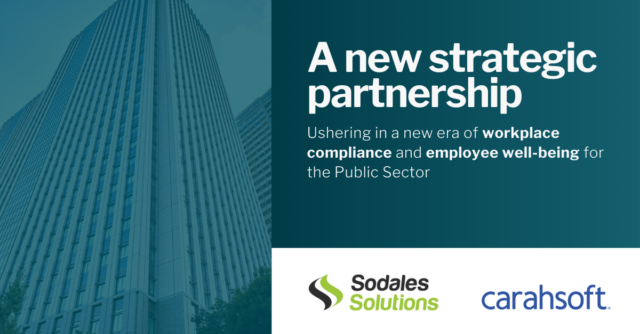


As OSHA fines continue to rise each year, organizations across all industries are feeling the pressure to tighten their safety protocols. The last few years have marked a significant increase in fines for businesses that don’t meet OSHA’s stringent standards. This surge isn’t random, but a clear signal from OSHA that the stakes for workplace safety are higher than ever.
The Department of Labor’s Solicitor of Labor’s 2023 Enforcement Report offered a glimpse into the Department’s initiatives and key enforcement priorities for 2024. The report indicates that the Department, and particularly OSHA, plans to expand its enforcement strategies to more comprehensively hold both employers and individuals responsible for workplace safety violations. Notably, the report details a significant case where it successfully convinced an administrative law judge to “pierce the corporate veil”. This legal action was taken against a corporation allegedly using its structure to undermine the objectives of OSHA, resulting in the owner being held personally liable for $1.5 million in penalties after declaring an intention never to pay.
It’s important to understand that these OSHA regulations are not just bureaucratic hurdles, they are carefully designed frameworks to protect the most valuable asset of any business—its people. A safe worker is a productive worker and a productive workplace is a profitable one. By prioritizing safety compliance, organizations are not just dodging fines—they’re building a foundation for sustainable success.
This blog will explore how and why the enforcement of these regulations has intensified, what this means for your organization and how you can stay ahead of the curve with Sodales, in maintaining a safe, compliant workplace.
OSHA has been increasing fines primarily as a deterrent to prevent workplace accidents and violations of health and safety regulations. By imposing higher penalties, OSHA aims to underscore the seriousness of maintaining a safe working environment and to motivate employers to proactively manage workplace risks. This approach is intended to compel organizations to prioritize safety, thereby reducing the occurrence of workplace injuries and fatalities. Higher fines also reflect adjustments for inflation and serve to maintain the effectiveness of penalties as both a punitive and preventive measure.
Penalties are associated with the type of violation, but on average:
Let’s put this into perspective. Since 2017, OSHA along with various state OSHA programs, have carried out over 500 inspections at retail locations operated by Dollar Tree Inc. These inspections have uncovered more than 300 violations. Common issues identified during these inspections include obstructed or blocked exit routes, fire extinguishers, and electrical panels; hazardous walking-working surfaces; and improperly secured merchandise stacks that pose safety risks. After conducting inspections in Ohio, OSHA issued proposed penalties totaling $1,233,364 for numerous safety violations at these locations. More recently, following an inspection initiated on January 31, 2022, after an employee reported unsafe conditions, OSHA issued citations for one repeat violation and four willful violations. The agency proposed penalties totaling $685,777 for these infractions.
Organizations face severe reputational damage when safety lapses become public, potentially leading to lost business and diminished trust among consumers. Operational disruptions following accidents or during investigations can halt productivity, causing significant financial setbacks. Additionally, legal liabilities, including lawsuits and settlements, can impose further financial burdens and distract from core business operations. These combined risks make a strong case for viewing compliance not only as a statutory obligation but as an integral aspect of maintaining operational integrity and ensuring employee welfare.
OSHA keeps track of all cited violations each year. In the fiscal year ending September 30, 2023, the following violation types were most common:
Click here to see OSHA’s most recent violation citations. So, what can organizations do to mitigate these violations and penalties?
Navigating the complexities of OSHA regulations and effectively mitigating the risks of non-compliance requires a sophisticated approach. This is where Sodales comes in. Designed to integrate seamlessly with existing systems, Sodales’ suite of health, safety and employee and labor relations tools provides a comprehensive platform that significantly enhances compliance capabilities.
Sodales’ integrated incident and disability management modules significantly enhance OSHA reporting and compliance for incidents, accidents, near misses and disability reports. The system streamlines the entire process from reporting to investigation with pre-built workflows tailored to industry-specific incidents. Employees can report a wide range of incidents, including motor vehicle collisions, near misses, slips/trips/falls, personal injuries and property or equipment damage. Additionally, this module supports both occupational and non-occupational short-term and long-term disability claims, assists with return-to-work programs, modifies duties and job assignments. The robust platform also aids in the generation of necessary workers’ compensation forms for various regulatory bodies, including OSHA, ensuring compliance and promoting preventative safety measures within the workplace.
One of the standout features of Sodales’ software is its ability to track compliance metrics in real-time. This functionality allows organizations to continuously monitor their adherence to safety standards and promptly address any potential violations. By identifying risks before they lead to fines or injuries, organizations can proactively manage their compliance and maintain a safer workplace environment.
Sodales software simplifies the complexity of compliance reporting. The administration and reporting toolsfeature a robust built-in dashboard designed to enhance workplace compliance across health, safety, employee and labor relations processes. By utilizing advanced reporting tools to track key performance indicators and analyze trends, organizations can make strategic decisions that foster a positive workplace culture. The reporting dashboard supports the creation and management of policy documents and letter templates, provides role-based permissions and facilitates notifications and electronic signatures, all while offering detailed analytics for all modules to monitor the effectiveness of strategies in real-time.
The predictive analytics capabilities of Sodales’ software are a critical component of its risk management tools. By analyzing trends and data, the software can predict potential safety issues before they arise, allowing organizations to implement preventive measures in advance. This proactive approach to risk management not only helps in maintaining compliance but also enhances overall workplace safety.
The adoption of Sodales’ compliance software suite represents a strategic investment for organizations aiming to navigate the intricacies of OSHA regulations efficiently. By leveraging these advanced tools, organizations can ensure they remain compliant, reduce the likelihood of costly violations and foster a culture of safety and awareness that permeates every level of the organization.
As OSHA fines continue to rise, the cost of non-compliance can far exceed the investment in effective compliance solutions. Sodales’ software offers a proactive approach to manage health and safety protocols, ensuring that organizations not only meet but exceed OSHA standards. By integrating Sodales solutions, organizations can protect their workforce, reduce liability and maintain a reputation for safety and reliability. In an era where safety compliance is more scrutinized than ever, Sodales provides the tools necessary to thrive in a challenging regulatory environment.
To learn how Sodales for Enterprise Health, Safety and Employee Relations can help take your HR relations processes to the next level, book your free industry-specific demo here.
